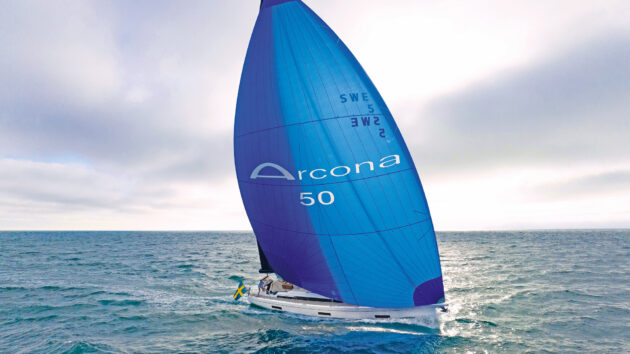Arcona 50 review: Does the new Arcona flagship impress?
Does a metre really make that much difference when it comes to boat length? It may be one small step up in size, but it represents a giant leap for the normally understated Swedish yard Arcona. Take a look at their stunning new flagship, the Arcona 50, and you’ll see how different this boat is to the rest of their fleet. Stefan Qviberg, the yard’s resident designer, passed away in 2018 having drawn every Arcona from 1982 onwards. The new designer had some big boots to fill. Conveniently, the design duo of Niels Jeppesen and Ariadna Pons had recently stepped away from X-Yachts to establish their own design practice. The potential accusation that the Arcona 50 looks more like an X-Yacht is therefore not entirely unfounded, though Arcona would respond that it looks like an Arcona drawn in the style of Jeppesen & Pons, rather than an imitation of any other yard. The fact is, however, that a wide, full stern that is balanced by full bow sections, pronounced hull chines and twin rudders represents a departure for the Swedish yard from its trademark fast, sleek and sharp-bowed coastal cruisers. It represents not only an incorporation of the recent advances in design thinking, but also the entry into the highly competitive luxury cruiser market. She’ll stand toe-to-toe with other yachts around the 50ft, £1m mark, including the Solaris 50, X-Yachts X49, or Swan 48 as well as boats from Grand Soleil and Oyster. Distinctive DNA That being so, I was keen to find out how much of the distinctive Arcona DNA has survived this evolution. I was joined for the test sail by the boat’s designer, Ariadna Pons, and as she enthused about the boat, it became clear that this is a boat that is set apart by understated but key details. The Arcona 50 may do similar things to other boats, she just aims to do them better. Vacuum-infused, foam-cored bulkheads and locker fronts with bespoke-machined aluminium catches save seemingly insignificant grams, but cumulatively these details shave a whopping 10% off the boat’s weight using standard methods. 5% of that weight has been put back into the boat, but at the bottom of the massive 2.95m keel. This keel, a fin of Swedish cast iron with a lead bulb, was the recipient of some science magic. Structurally, it is bolted straight into the hull’s galvanised steel matrix, itself bolted to the hull’s frames and stringers, making it far stiffer than a GRP matrix. The keel root is located in a recess in the hull, giving a more watertight bond, but also ensuring perfect alignment of the keel every time. Article continues below… The lead bulb is formed around and bolted through a steel H-beam to give structural integrity. The fin shape tapers downwards, taking account of the increasing density of water at depth, but the leading and trailing edges, and the keel’s width, all curve convexly out towards the keel’s midpoint to get water travelling across it at the … Continue reading Arcona 50 review: Does the new Arcona flagship impress?
